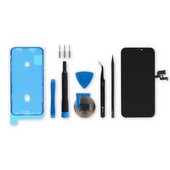Introduction
Try these solutions if your iPhone X won’t turn on. Many of these fixes apply to other model iPhones as well—check the iPhone won’t turn on wiki for more generalized instructions.
Causes
Your iPhone 10 may simply be temporarily frozen and needs a manual reset or “force restart.” Quickly press and release the volume up button, then the volume down button. Finally, press and hold the power button until the Apple logo appears, and then release it. For complete instructions, see the guide How to Force Restart iPhone X.

- 20 secondsVery easy
If the iPhone still doesn’t turn on after 30 minutes connected to power, check the charging port and cable and make sure they’re clean. If the charging port is clogged with debris or the charging cable contacts are dirty, this can prevent the battery from charging. Clean the port carefully with a toothpick and a little isopropyl alcohol, let it dry, and try a different charging cable. Alternatively, try charging your iPhone wirelessly.
If the iPhone still doesn’t turn on, it may have a dead battery or a bad charging port. Replace the battery with a partially charged one and see if the phone will turn on. If not, there may be a power button or logic board issue. If the phone does turn on, plug it in and see if the charging indication comes on. If the phone says it is charging, then the Lightning connector works, and you likely had a bad battery. But if it still doesn’t charge, you may need to replace the Lightning connector.

- 1 - 2 hoursModerate
If the power button doesn't seem to work, plug the iPhone into a power source and see if it turns on automatically. If the phone turns on and has power, then there might be a problem with either the power button or the power button cable. Test the power button and replace it if necessary.
It’s possible that it appears nothing is happening because the display is bad. An easy way to test this is to turn the phone on and listen for a sound. Also, you can move the mute toggle switch back and forth to see if it vibrates. If it vibrates or you hear a sound but nothing displays on the screen, then the screen is most likely the problem. Try replacing it and see if the display is still black.
You can purchase a new screen here.
You can also learn how to replace the iPhone X screen yourself.

- 1 - 2 hoursModerate
If none of the above solutions does the trick, your logic board may be faulty and needs to be replaced. You can either replace the entire board, or attempt to diagnose and repair it using microsoldering techniques. That is a whole 'nother beast!
If you’re interested in learning board-level repair, you can start your investigation here! You can also get the materials to practice microsoldering here.









